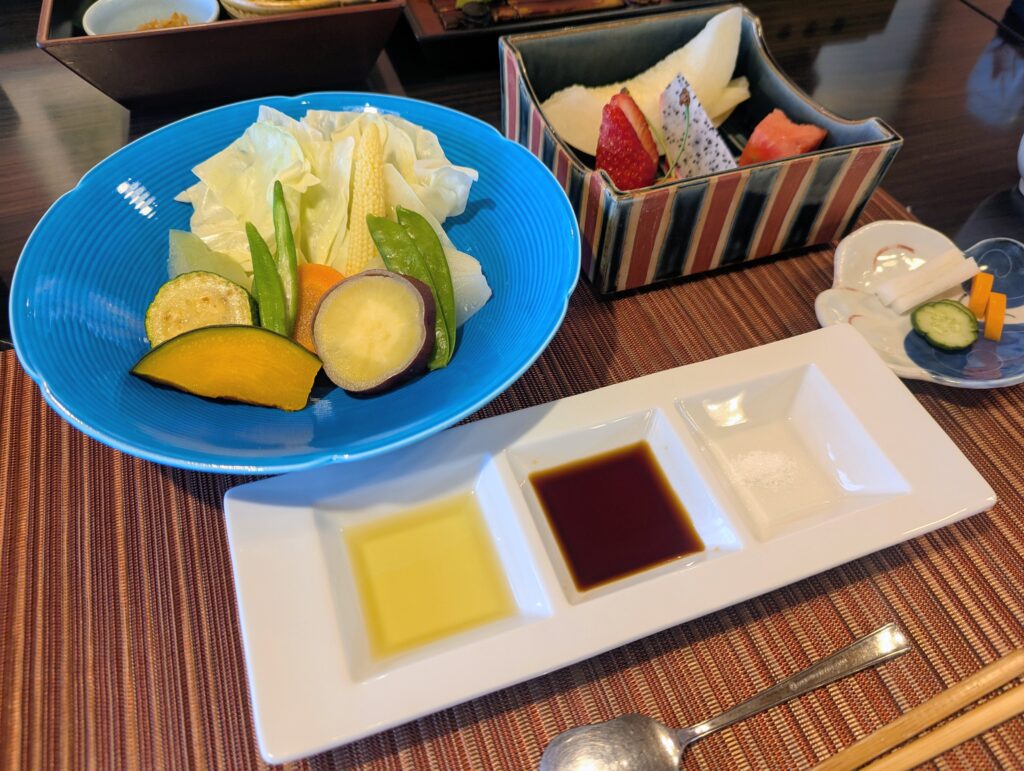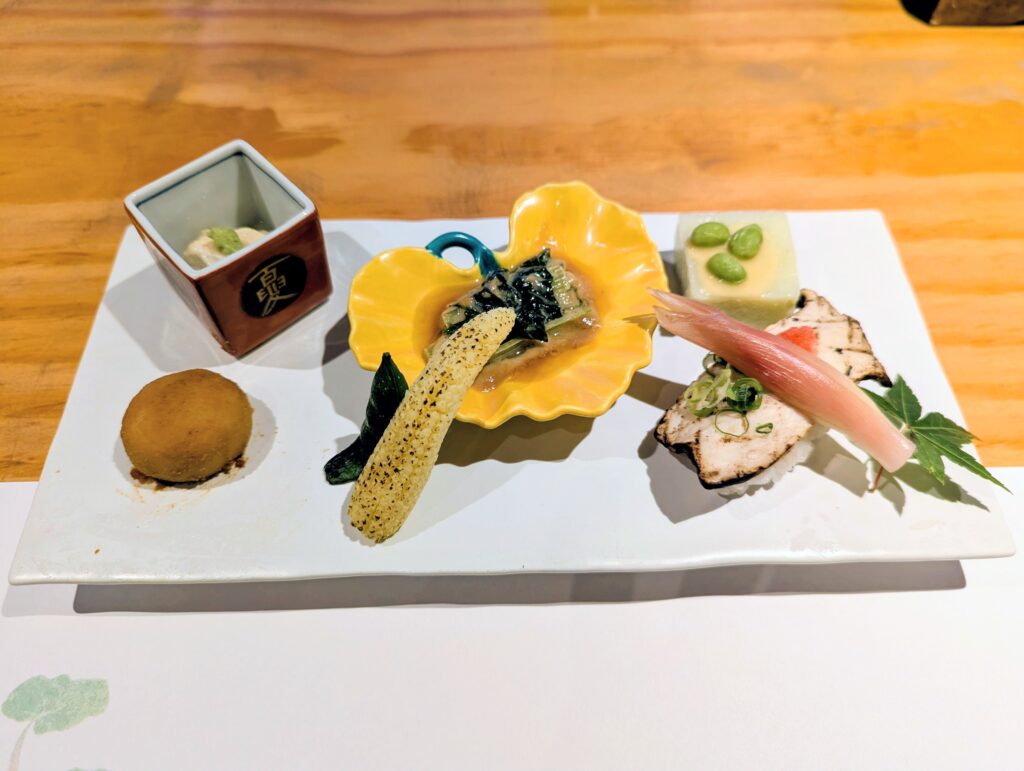When visiting Japan, there is one thing that you must have on your bucket list: staying in a ryokan. As traditional Japanese inns, ryokans allow a unique cultural experience that you would miss if you stayed in hotels your entire trip. They offer the opportunity to feel Japan’s spirit of omotenashi – the belief that hosts should welcome and care for guests with their whole heart – in a traditional and authentic setting.
One ryokan that epitomises this is Kakujoro, a near century-old ryokan located on the Atsumi Peninsula in Aichi Prefecture.
Upon stepping into Kakujoro’s threshold, you cross a boundary that transports you from the present day to an old world that is fast slipping away. Here, time feels as if it has stood still; a bubble of peace and tranquility envelopes the property, and the worries of the modern world simply roll away. The wood and glass facade welcomes you in with its bright openness and natural warmth; a warmth that only heightens as the sky darkens and the yellow lights from within shine through, beckoning you to come, sit awhile, and relax.
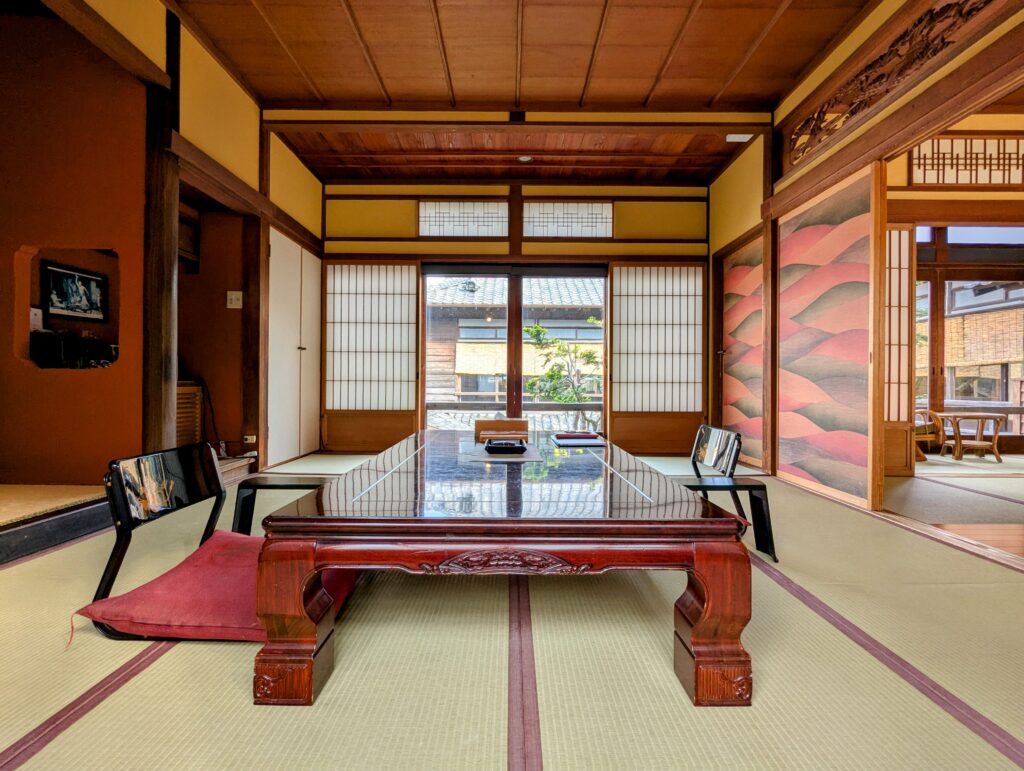
More than a stay, it’s an experience
Kakujoro is more than a simple place to rest your head for the night; it’s a time capsule that allows you access to the Japan of the 1920s. On the second floor, you’ll spot traditional tansu (wooden chests) right next to an antique wall-mounted grandfather clock. In the restaurant, you can take in the pure Japanese architecture while gazing out over the traditionally manicured garden.
Of course, no ryokan is complete without a hot spring, and Kakujoro provides both male and female public baths, as well as private baths for certain guest rooms. Visitors can soak in the hot water and feel the breeze coming off the Pacific Ocean, allowing you to feel centered both in the landscape and in the moment.
After a comfortable night’s sleep, you can awake to the earthy scent of the garden and the sounds of birds flitting through the trees. After making yourself a coffee (from the coffee machine that serves as one of the few modern touches), you can sit on the second-floor terrace overlooking the garden, replacing your phone screen with the sight of sunrays shining off the kawara (traditional Japanese roof tiles) and watching the natural world wake up as you do the same.
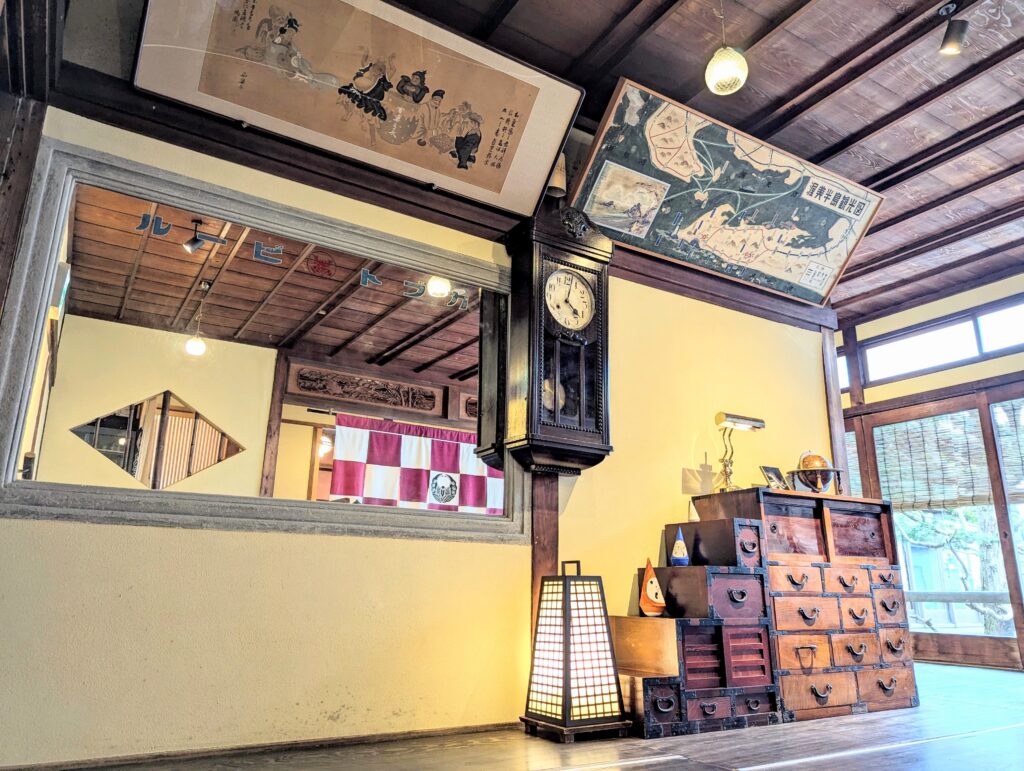
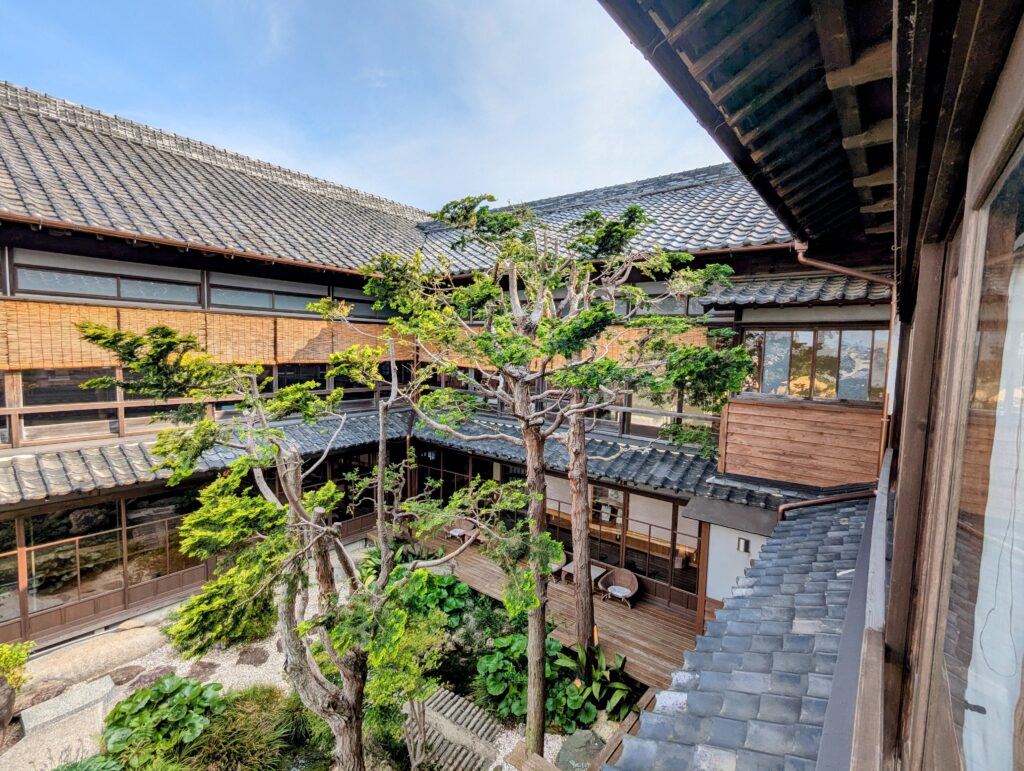
Tradition balanced with comfort
Having first opened its doors in 1929, Kakujoro has strived to retain its original charm and humble elegance over the last century, whilst also inviting in subtle modernisations that provide comfort and convenience for modern-day travellers.
Western beds have replaced futons in many of the rooms, though they blend seamlessly into the traditional tatami interiors without detracting from their historic charm. The ryokan also offers speedy Wi-Fi, useful for remote workers wanting to check their emails or travellers planning their next steps.
Not a tourist destination, but a destination worth visiting
One of Japan’s lesser-visited prefectures, Aichi does not suffer from the throngs of tourists as certain other locations do. Known predominantly as the home of major industrial businesses such as Toyota and Mitsubishi, one of the region’s biggest tourist attractions outside Nagoya City is Ghibli Park, which opened in 2022.
Atsumi Peninsula, where Kakujoro is located, is a quieter, more tranquil part of Aichi and offers an amazing opportunity to see Japanese towns and natural areas largely unaffected by the recent influx of international visitors.
If you’re visiting during the cooler months, then why not try strawberry picking in a local greenhouse? Japan’s strawberries are famously sweet and juicy, and they’re at their peak between December and May. From May to October, as the weather warms, you can enjoy the region’s famous melons, with options to eat as much as you want or pick your own at local farms.
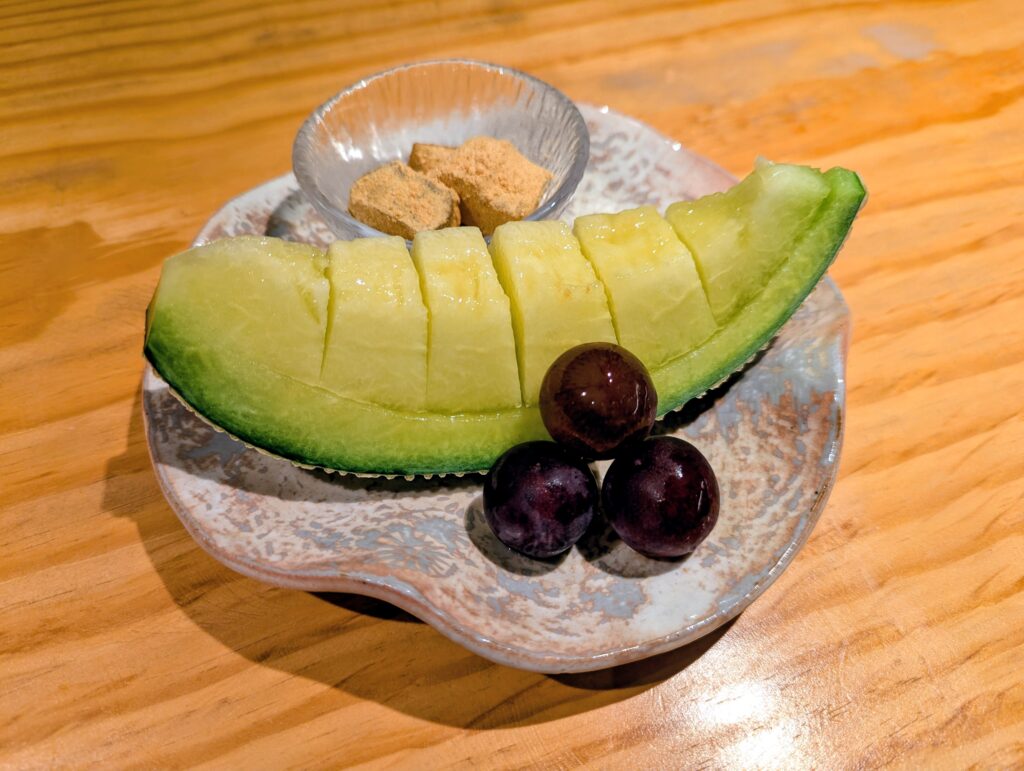
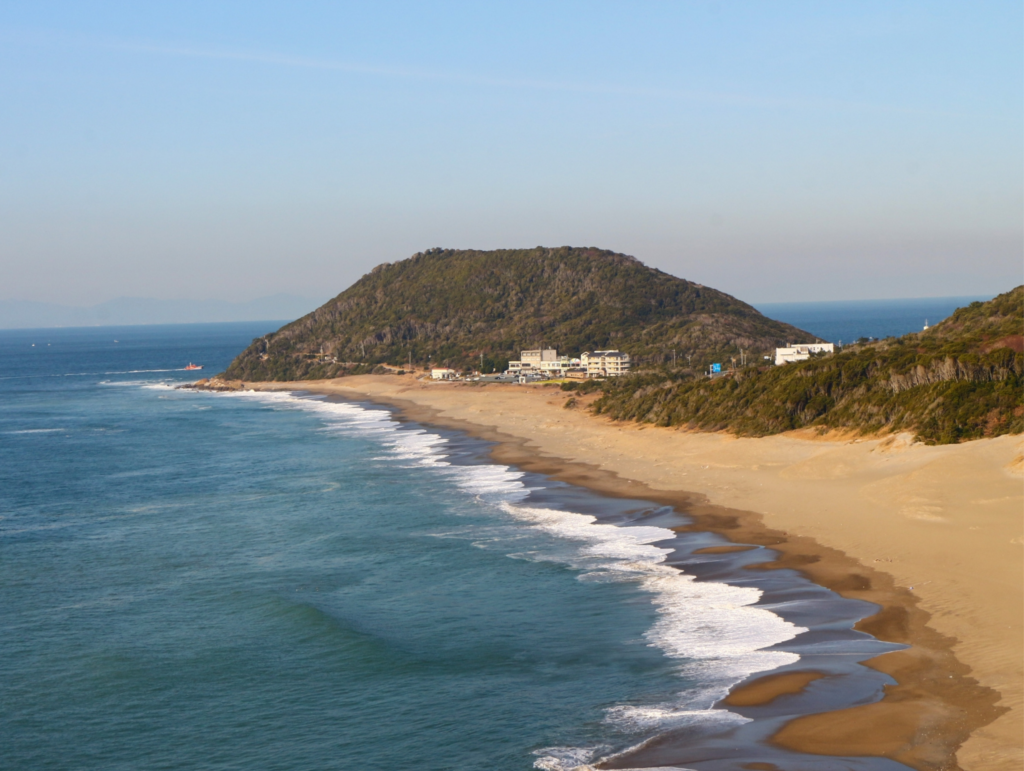
Fill your soul with food
On the topic of food, Kakujoro offers guests a taste of their signature kaiseki cuisine (Japan’s traditional multi-course haute cuisine). Utilizing local ingredients, including the abundance of fresh fish caught right from the Pacific Ocean, Kakujoro’s meals embody the flavors of the Atsumi Peninsula. Its particular speciality is torafugu (Japanese pufferfish), which can only be prepared and served by a licensed chef. This particular delicacy is only available between October and March.
Depending on the season and the catch of the day, the kaiseki menu may include spring blackthroat seaperch, early summer beltfish, winter blackhead sea bream and flathead, and cherry blossom sea bream. Even the vegetables are carefully selected based on seasonality and freshness.
For vegetarians and vegans, eating at a ryokan can often be a source of stress, given that authentic and traditional Japanese cuisine often contains regional fish, meat, or even fish in the form of dashi (stock). However, Kakujoro is happy to accommodate, and can offer delicious vegan meals prepared with the same effort, love, and care as their usual fare. Just make sure you let the chef know well in advance.
So, would you step away from the bustle and noise of the usual tourist route to stay somewhere as authentic and peaceful as Kakujoro?
